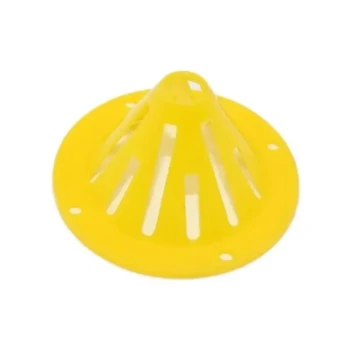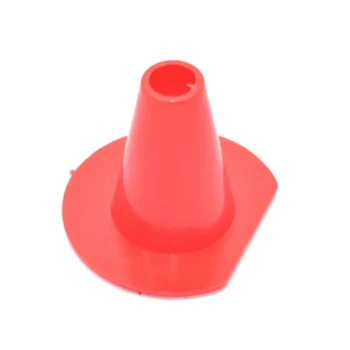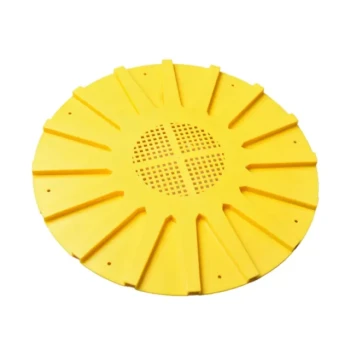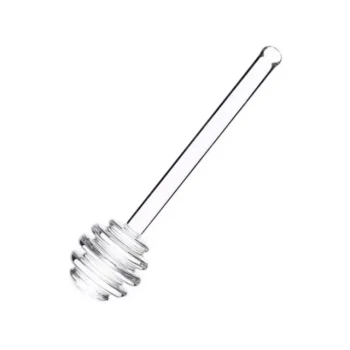Leaving a bee escape board on a hive for too long completely undermines its primary function. The bees, being persistent problem-solvers, will eventually figure out how to navigate the one-way exit in reverse. This allows them to re-enter the honey supers, defeating the entire purpose of clearing the box for a peaceful harvest.
The effectiveness of a bee escape board is a race against the clock. It is a temporary tool designed for a 24-48 hour window, after which its ability to clear bees diminishes significantly as they begin to repopulate the honey supers.
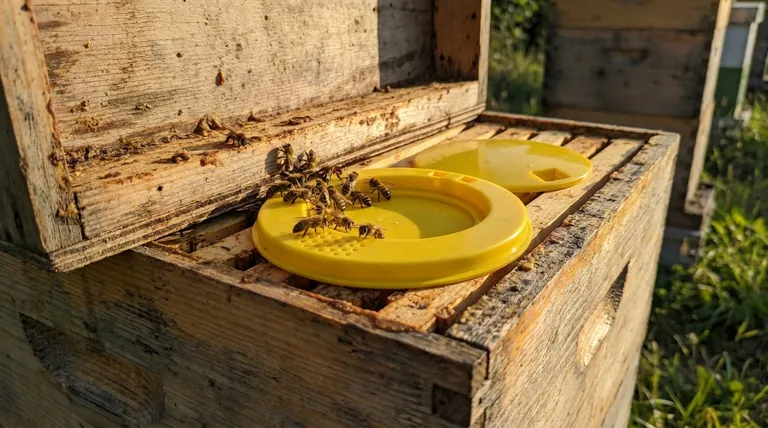
How a Bee Escape Board Works
A bee escape board is a clever tool designed to separate bees from the honey you intend to harvest, minimizing stress on both the beekeeper and the colony.
The One-Way Door Principle
The board contains one or more one-way "escapes" or mazes. Bees can easily travel down from the honey supers and through the escape to join the main cluster in the brood box below.
However, the design makes it extremely difficult for them to find the small opening to travel back up into the super. This effectively funnels the bees out of the box you want to remove.
The Goal: A Peaceful Harvest
The primary reason to use an escape board is to clear the supers almost entirely of bees. This allows you to remove heavy boxes of honey without the chaos of brushing or blowing thousands of agitated bees off the frames.
The Critical Time Window
The success of this tool hinges entirely on timing. Installing it and removing the supers must be done within a specific period.
The Sweet Spot: 24-48 Hours
The ideal duration to leave a bee escape board on a hive is between 24 and 48 hours. This provides enough time for the vast majority of bees to move down into the brood chamber.
Why "Too Long" Is a Problem
Bees are incredibly intelligent and persistent. If the board is left on for more than two days, scout bees will begin actively seeking a way back to the familiar honey stores.
Given enough time, they will explore every crack and crevice, eventually re-discovering the escape's exit point and communicating its location to others.
The Consequence: A Failed Clearing
The result is simple: you will return to your hive expecting an empty super, only to find it full of bees again. This negates the benefit of using the board and forces you to resort to other, more disruptive clearing methods.
Common Pitfalls to Avoid
Beyond timing, a few other factors can render an escape board ineffective.
Gaps and Leaks in Equipment
Your bee escape board will fail if the bees have another way to get into the supers. Ensure the board is seated correctly and that there are no cracks, holes, or warped lids that provide an alternative entrance.
Brood in the Honey Supers
If the queen has laid eggs in the honey supers, the nurse bees will not abandon the brood. An escape board is completely ineffective if there is brood in the frames you are trying to clear.
Poor Weather Conditions
Bees may be slower to move down during cold or rainy weather. While the 24-48 hour rule is a strong guideline, you may need to adjust based on a weak colony or poor conditions.
Making the Right Choice for Your Harvest
Use these guidelines to ensure your next honey harvest is smooth and efficient.
- If your primary focus is a stress-free harvest: Install the board 24 to 48 hours before you plan to pull the supers, ensuring a tight fit with no other entrances.
- If you find bees still in the super after 48 hours: The most likely causes are brood in the honey super or gaps in your equipment that allowed re-entry.
- If you are short on time: An escape board is not the right tool. You should consider using a bee brush, a fume board, or a bee blower for immediate results.
Proper timing is the key to transforming your escape board from a simple piece of wood into a highly effective harvesting strategy.
Summary Table:
| Duration | Effectiveness | Result |
|---|---|---|
| 24-48 hours | Optimal | Successfully clears most bees from honey supers |
| Over 48 hours | Poor | Bees re-enter supers, defeating the purpose |
Need reliable beekeeping equipment for your commercial operation?
HONESTBEE supplies commercial apiaries and beekeeping equipment distributors with high-quality harvesting tools that perform as expected. Our wholesale-focused operations ensure you get durable, well-designed equipment that makes your honey harvest efficient and stress-free.
Contact us today to discuss your commercial beekeeping supply needs!
Visual Guide
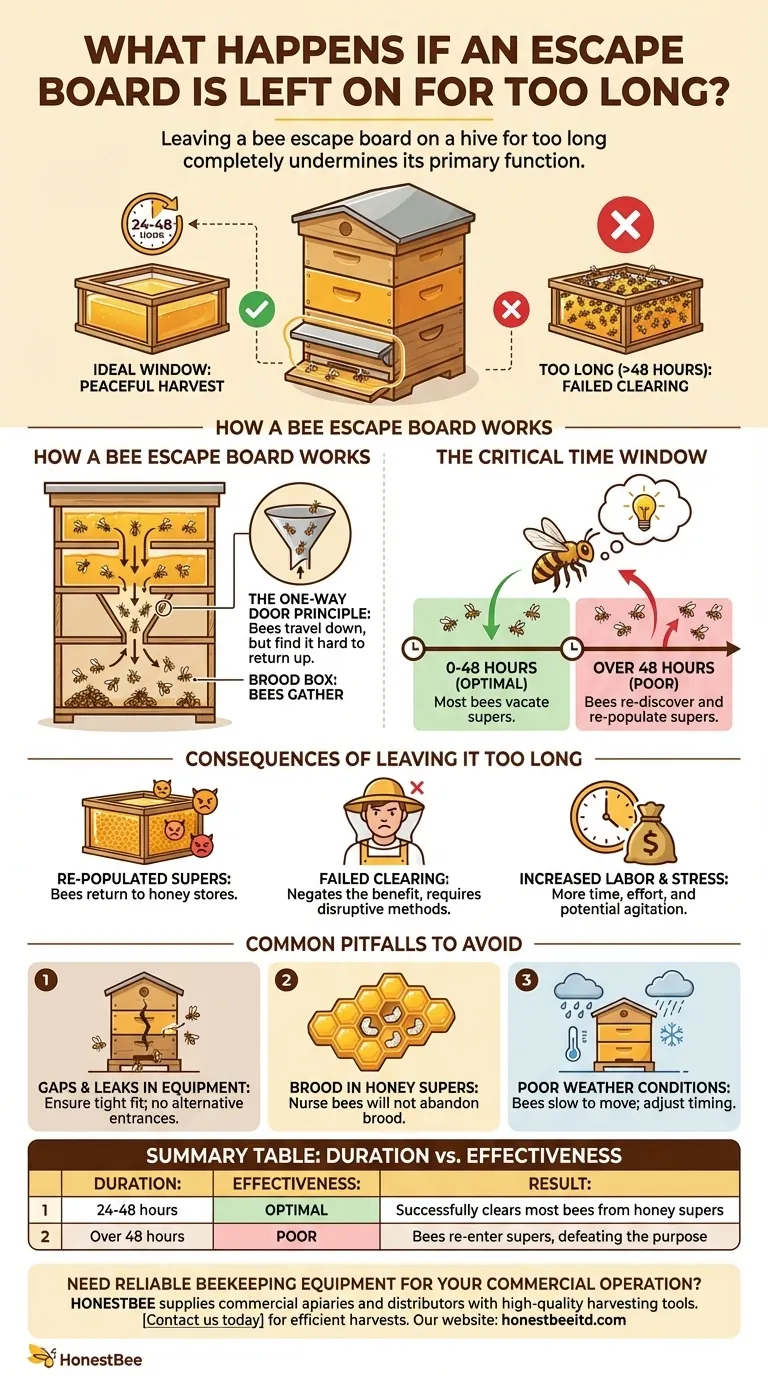
Related Products
- Circular Labyrinth Bee Escape for Efficient Hive Management
- Professional Durable Two-Piece Plastic Bee Escape
- HONESTBEE Multi Exit Plastic Bee Escape Board for Efficient Honey Harvesting
- Slatted Porter Style Bee Escape for Rapid Hive Clearing
- Efficient Hive Clearing: HONESTBEE 8-Way Plastic Bee Escape
People Also Ask
- How long should you wait after placing a bee escape board before harvesting honey? Clear Your Supers in 24-48 Hours
- How long should a bee escape be placed before harvesting honey? The 24-48 Hour Guide to a Stress-Free Harvest
- What happens if Triangular Escape Boards are left on for more than 24 hours? Risk of Bee Re-Entry and Failed Harvest
- What is the purpose of a bee escape board? A Gentle, Chemical-Free Way to Harvest Honey
- What is the correct orientation for placing Triangular Escape Boards? Ensure a Stress-Free Honey Harvest



